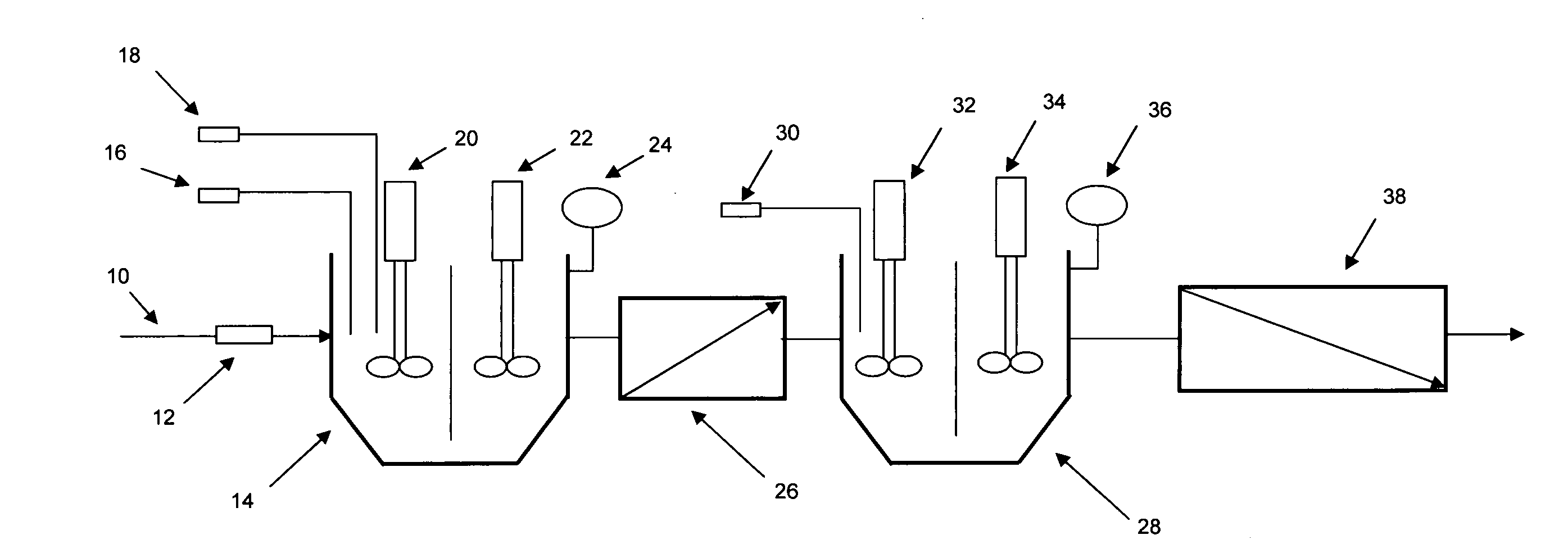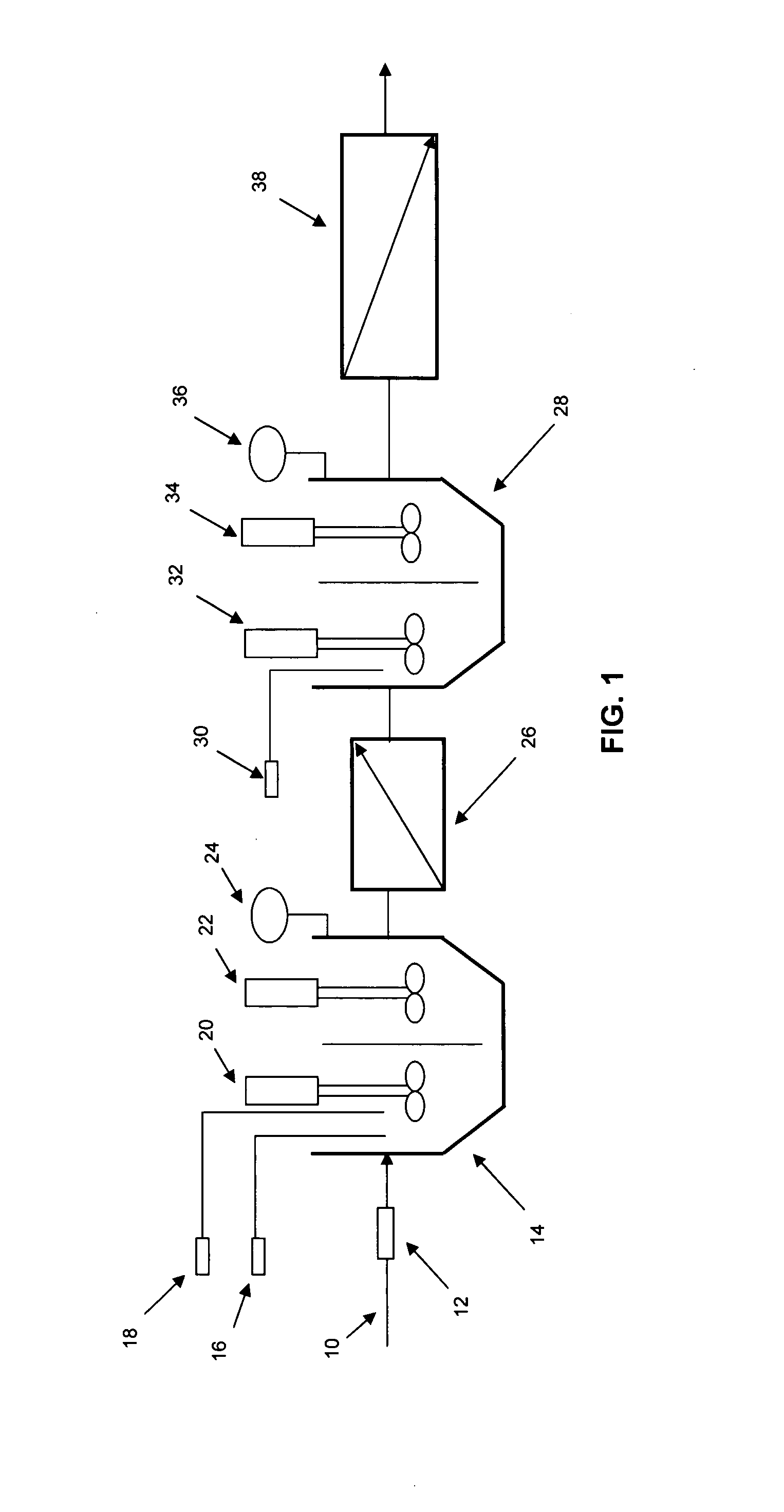Process for enhanced total organic carbon removal while maintaining optimum membrane filter performance
a technology of membrane filter and total organic carbon, which is applied in the direction of membrane, separation process, multi-stage water/sewage treatment, etc., can solve the problem that membrane filtration alone cannot remove the insoluble component of toc, and achieve the effect of reducing the amount of toc in the membran
- Summary
- Abstract
- Description
- Claims
- Application Information
AI Technical Summary
Benefits of technology
Problems solved by technology
Method used
Image
Examples
embodiment
Preferred Embodiment
[0017]One embodiment of the process is the primary coagulant dosing 16, pH control 24 and mixing system 14 illustrated in FIG. 1. (this vessel can be a steel, fiberglass or concrete tank) A chemical metering system 16 (pump) with feed lines doses the coagulant in an automated mode based on flow rate, by receiving a signal from a flow meter 12. A primary chemical metering system 16 (pump) with feed lines doses either acid or base depending on the desired pH set point. A pH probe 24 is installed which sends a signal to a pH set point controller. The probe controls the optimum pH set point by introducing the required acid or base 18. A variable speed mixer 20 is mounted into this tank to provide adequate mixing of the chemical coagulant and pH acid and / or base chemical. This mixer would be a rapid mix type. The chemical mixing system 14 would be divided into a separate compartment which would be mounted with a slower speed flocculation or maturation mixer 22.
[0018]A...
PUM
| Property | Measurement | Unit |
|---|---|---|
| pH | aaaaa | aaaaa |
| pressure | aaaaa | aaaaa |
| fouling” rate | aaaaa | aaaaa |
Abstract
Description
Claims
Application Information
 Login to View More
Login to View More - R&D
- Intellectual Property
- Life Sciences
- Materials
- Tech Scout
- Unparalleled Data Quality
- Higher Quality Content
- 60% Fewer Hallucinations
Browse by: Latest US Patents, China's latest patents, Technical Efficacy Thesaurus, Application Domain, Technology Topic, Popular Technical Reports.
© 2025 PatSnap. All rights reserved.Legal|Privacy policy|Modern Slavery Act Transparency Statement|Sitemap|About US| Contact US: help@patsnap.com


